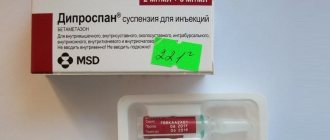Metformin is a drug containing the active ingredient of the same name. The medicine is produced by different manufacturers, but this does not change its pattern of action.
The price of metformin in pharmacies varies and largely depends on the region of purchase, dosage and number of tablets in the package.
The price for Metmorphin Canon (60 pieces, 500 mg each) is about $3, and Metformin Richter (60 pieces, 500 mg each) will cost almost $4.
Despite the fact that the instructions for use of Metformin do not provide such data, the drug is compared with a universal medicine that provides unique assistance to the body, relieving it of existing diseases and preventing the emergence of new ones.
You can now hear from many patients that Metformin prolongs life and saves you from old age.
What is Metformin
According to its chemical structure, metformin is the main representative of the biguanide series. It is a first-line drug for the treatment of type 2 diabetes and is considered the most popular hypoglycemic agent in many countries of the world. Unlike other groups of oral medications, it is better at keeping weight in place or promoting weight loss. Metformin is also sometimes used for weight loss (treatment of obesity) in people without diabetes, although it was not originally intended for this.
Its weight loss effect is due to several mechanisms:
- the level of “bad” cholesterol decreases;
- the absorption of simple sugars in the gastrointestinal tract decreases;
- glycogen formation is inhibited;
- Glucose processing is accelerated.
Drug interactions
To prevent the occurrence of hyperglycemia, the drug is not prescribed simultaneously with danazol.
Caution is required in combination with chlorpromazine and antipsychotics. In these cases, the dosage of dimethyl biguanide depends on the sugar level
An increase in the hypoglycemic effect of the drug is observed when it is used simultaneously with:
- sulfonylurea;
- insulin;
- acarbose;
- monoamine oxidase (MAO) inhibitors (an enzyme that is found in nerve endings and helps increase the concentration of serotonin, dopamine, norepinephrine and other monoamines in the synapse due to their destruction);
- oxytetracycline;
- ACE inhibitors (angiotensin-converting enzyme) (medicines that help with hypertension);
- beta blockers;
- clofibrate derivatives;
- cyclophosphamide.
The risk of developing lactic acidosis increases while taking cimetidine. Metformin weakens the effect of anticoagulants. A decrease in the hypoglycemic effect of the drug is observed in combination with:
- glucocorticosteroids;
- oral contraceptives;
- glucagon;
- epinephrine;
- diuretics;
- thyroid hormones;
- derivatives of nicotinic acid.
Pharmacological properties
The drug is a biguanide drug. Its uniqueness is that it does not increase the synthesis of its own insulin. In addition, it does not affect glucose levels in healthy people. Metformin is able to increase the sensitivity of special receptors to insulin, inhibit the absorption of glucose in the gastrointestinal tract and lower its level in the blood by inhibiting conversion in the liver.
Additionally, metformin has a positive effect on fat metabolism: it reduces cholesterol, low-density lipoproteins and triglycerides, and at the same time increases the content of high-density lipoproteins. During the course of treatment, body weight either remains unchanged (which is also a positive result) or slowly decreases.
The highest concentration of the substance is achieved approximately 2.5 hours after application. The half-life is approximately 7 hours. If kidney function is impaired, the risk of its accumulation in the body increases, which is fraught with complications.
Pharmacokinetics
The bioavailability of a drug (the amount of unchanged drug that reacts directly with the target molecule) on an empty stomach is about 60 percent.
The drug is well absorbed in the intestine, from where it penetrates into the blood plasma. Once in the bloodstream, Metformin is distributed in a fairly large volume of plasma. Does not bind to blood proteins.
There is a slight decrease in the effect of the drug when taken with food or drinks.
The maximum concentration of the substance in plasma is observed after 2-3 hours when using fast-acting forms of the drug, after 6-8 hours - when taking prolonged forms.
Alcohol and smoking contribute to poor absorption of the drug. Overly obese people also develop a certain tolerance to the drug.
Indications and contraindications
Metformin is prescribed for type 2 diabetes in obese patients when dietary adjustments and exercise have not brought the expected results. Can be used as the only drug against diabetes in children over 10 years of age and adults, or as an adjuvant to insulin. Adults can also combine it with other hypoglycemic tablets.
It is not recommended to use metformin for weight loss for people who do not have grade 2 or 3 obesity.
The drug has a lot of contraindications:
- Allergy to the active substance or any of the components.
- You should not take it during a strict diet if you consume less than 1000 kcal per day.
- Pregnancy.
- Severe heart failure, acute myocardial infarction, breathing problems against this background.
- Impaired kidney function. This also includes water balance disorders, shock, and severe infectious diseases that can lead to kidney failure.
- Large-scale surgical interventions and injuries.
- Diabetic ketoacidosis, precoma and coma.
- Liver dysfunction, alcoholism, acute poisoning from strong drinks.
- Accumulation of lactic acid in skeletal muscles, skin and brain, which is called lactic acidosis.
Metformin should not be taken by elderly people who have heavy physical activity - this is due to the possible occurrence of lactic acidosis. Women who are breastfeeding should also be careful and take the drug only in consultation with their doctor, but most often lactation is completed so as not to harm the baby.
Which drug to choose
The presented tablets are sold freely, so the medicine can be ordered for home delivery without a doctor's prescription. The effect of all drugs on the body is the same, since they contain the same active substance. It is difficult to say exactly which of the tablets presented in pharmacies is better to choose:
- Metformin Richter is produced in Russia. The manufacturer strictly limits the list of diet products. In addition to the above lists, all carbohydrate-containing foods, rice, and instant cereals are prohibited. Cost – from 199 rubles per package.
- Metformin produced by Teva is an Israeli drug that is available in tablet form in dosages of 500, 850 and 1000 mg. In the minimum dosage the price is about 80 rubles. The instructions indicate that its effectiveness is reduced by diuretics, nicotinic acid derivatives and hormonal drugs. This long-acting medicine is also available, which reduces the risk of side effects.
- Metformin Canon for weight loss is produced in Russia. The cost for a dosage of 500 mg is 130 rubles. The medicine goes on sale containing 500, 850, 1000 mg of active substance in one tablet. It is one of the most effective antihyperglycemic agents for weight loss.
- Metformin Zentiva is a Slovak medicine that contains 0.5, 0.85 or 1 g of active substance. The cost in the minimum dosage is from 118 rubles. Often prescribed to normalize carbohydrate levels.
How to take Metformin
It often causes adverse events from the gastrointestinal tract; to improve tolerability, it is recommended to increase doses slowly and split them up.
Dosage regimen for adults as the only drug for treatment or in combination with other sugar-lowering tablets:
- The drug is taken during or after meals. Usually the initial dose is 500-850 mg per day, divided into several doses. Its increase is directly related to the level of glucose in the blood.
- Maintenance dosage is 1500-2000 mg per day, divided into 2-3 doses to improve the gastrointestinal tract's response to the drug.
- The maximum daily dosage should not exceed 3000 mg.
Combination with insulin:
- The initial dosage of metformin is also 500-850 mg 2-3 times a day, the amount of insulin is selected individually based on blood sugar levels.
For children over 10 years of age, metformin is prescribed 500-850 mg once a day after meals. Dose adjustment is possible after 2 weeks of use of the drug. The maximum dosage should not exceed 2000 mg per day, it is divided into 2-3 doses.
Elderly people should monitor their kidney function at least 3 times a year during treatment with the drug. If everything is normal, the dosage and frequency of use of metformin are the same as for middle-aged people.
There is a prolonged form of tablets that you can take once a day. Dosages are selected and increased individually; in this case, the drug is usually used after dinner.
Compatibility of Metformin with other drugs
Some medications interfere with the effective work of Metformin and can cause harm to the patient when combined with it.
If you use any of the following medications, you may need to check your sugar levels more often and adjust your dose:
- steroid tablets, such as prednisolone;
- diuretics such as furosemide;
- medications to treat heart problems and high blood pressure;
- male and female hormones such as testosterone, estrogen and progesterone;
- anticoagulants;
- other diabetes medications.
Some women may need a slight dose adjustment of Metformin after starting birth control pills. Hormonal agents tend to increase the rate of sugar absorption.
Metformin during pregnancy and lactation
There have been no full-scale studies on embryos. Limited observations indicate that no malformations have been identified in unborn children while the pregnant woman was taking the drug. But the official instructions insist that the expectant mother must notify the attending physician about her situation, and then he will consider switching her to insulin medications, if necessary.
It has been proven that the substance is excreted in breast milk, but side effects have not yet been observed in children. Despite this, it should not be taken during lactation; it is advisable to complete it so as not to cause unforeseen complications in the baby.
Analogues of the drug
Quite a long time has passed since the discovery of this drug. Since then, “Metformin” has practically not been produced in its original form, and its derivatives are becoming increasingly widespread. What drugs are Metformin based on? Its analogues are divided into several groups:
Tablet drugs. Among them, the most widely used are “Glucophage”, “Siofor 500”, “Siofor 850”.
These drugs have fewer side effects than Metformin. Their better digestibility and tolerability have been proven.
For some time, many scientists tried to modify Metformin. They tried to produce analogs of it in the form of a solution, suspension, or powder, but the greatest effectiveness was still seen in tablet forms of the drug.
Currently, priority has been given to combination drugs containing both Metformin and sulfonylurea drugs.
Side effects and overdose
Most often, while taking the drug, the digestive system suffers: loose stools, nausea, vomiting appear, the taste of food changes and appetite may deteriorate. Usually these symptoms are reversible - they appear at the very beginning of treatment and disappear as spontaneously as they appeared.
Other possible complications:
- Skin: itching, rashes, red spots.
- Metabolism: Lactic acidosis occurs extremely rarely. With long-term use of the medicine, the absorption of B12 is sometimes impaired.
- Liver: laboratory abnormalities, hepatitis. The changes are reversible and disappear after cancellation.
In cases where side effects do not interfere with overall health, the drug is continued without changes. If effects occur that are not described in the official instructions, you must inform your doctor about them and follow his further instructions.
An overdose of metformin occurs only when the dose taken is several times higher than the daily dose. It usually manifests itself as lactic acidosis - the central nervous system is depressed, respiratory, cardiovascular and excretory system disorders occur. In this case, immediate hospitalization is required!
Side effects
Like any medicine, Metformin can cause side symptoms. Among them, disturbances in the functioning of various body systems are recorded:
- nervous system: taste disturbance, headaches,
- skin: rash, itching, urticaria, erythema,
- gastrointestinal tract: nausea, heartburn, diarrhea, flatulence, stomach pain, vomiting,
- psyche: nervousness, insomnia.
Such effects do not require special treatment other than dosage adjustments. Usually, they disappear within a few days or weeks.
If side effects intensify and cause serious discomfort, you should urgently contact an ambulance. Such conditions can be life-threatening. In case of lactic acidosis, the following symptoms will appear:
- fatigue,
- weakness,
- muscle pain,
- labored breathing,
- drowsiness,
- severe stomach pain,
- dizziness,
- slow and irregular heart rhythm.
In addition, Metformin can cause a sharp decrease in blood sugar concentration, which is accompanied by the following symptoms:
- headache,
- weakness,
- trembling in the body,
- dizziness,
- irritability,
- heavy sweating
- hunger,
- cardiopalmus.
A medicine can affect the human body in different ways. Therefore, if side effects occur, you should stop taking it and immediately consult a doctor to adjust the dose of the medicine.
special instructions
Surgical interventions. Metformin should be discontinued two days before planned surgical operations and prescribed no earlier than two days after them if renal function is preserved.
Lactic acidosis. It is a very serious complication, and there are factors that indicate the risk of its occurrence. These include:
- severe renal failure;
- conditions when it is not possible to control blood glucose levels with medication;
- presence of a large number of ketone bodies in the body;
- hunger strike;
- serious problems with liver activity;
- chronic alcoholism.
While taking metformin, you should avoid alcoholic beverages and medications that may contain ethanol (tinctures, solutions, etc.)
If you suspect the development of lactic acidosis, you should immediately stop taking the drug and seek medical help. In most cases, emergency hospitalization is required.
Kidney activity. Elderly people who additionally take antihypertensive, diuretic and non-steroidal anti-inflammatory drugs and have kidney problems should be especially wary.
Other medications that may cause undesirable effects when taken simultaneously:
- danazol;
- chlorpromazine;
- β2-adrenergic agonists in the form of injections;
- nifedipine;
- digoxin;
- ranitidine;
- vancomycin.
You should notify your doctor in advance about their use.
Children from 10 years old. The diagnosis must be established before metformin is prescribed. Studies have shown that it does not affect puberty and growth. But control over these parameters should still be serious, especially at the age of 10-12 years.
Other. To lose weight, it is recommended to follow a diet in such a way that the consumption of carbohydrates is uniform throughout the day. You need to eat at least 1000 kcal per day. It is forbidden to go hungry!
Nutrition
In addition to the basic instructions with a detailed description of dosages and regimens for using tablets, experts give a number of useful recommendations. They are aimed at achieving better results in losing weight, and not in treating diabetes.
As noted above, when taking Metformin, special nutrition is important. If you don’t find the willpower to limit your diet to non-carbohydrate foods, you don’t even have to buy these pills, because you won’t get any effect from them
Try to understand what eating habits you will have to change:
- Count the calorie content of your meals. Less is better.
- Don't be hungry. Cover it with nuts or fruit.
- Maintain a drinking regime of 1.5 liters of water per day.
- A low-carbohydrate diet involves split, five meals a day.
- You can eat your last meal 4 hours before going to bed.
- Food can be boiled, stewed, baked, grilled or steamed, but not fried.
- It is better for men to lean on meat, for women - on fruits, vegetables, and berries.
Lists of permitted and prohibited products
Now you can find a lot of menu options for no-carbohydrate and low-carbohydrate diets, against the background of which taking capsules will contribute to maximum weight loss.
Sample menu
Official research results
One important clinical trial, the UK Prospective Diabetes Study (UKPDS), was conducted on people with type 2 diabetes who were overweight and taking metformin. Results:
- mortality from type 2 diabetes is reduced by 42%;
- the risk of vascular complications is reduced - 32%;
- the risk of myocardial infarction is reduced by 39%, stroke – 41%;
- overall mortality decreases by 36%.
A later study, the Diabetes Prevention Program, was conducted on the original French drug, Glucophage. Afterwards the following conclusion was made:
- a slowdown or prevention of the development of diabetes in people with impaired carbohydrate metabolism by 31% was noted.
Reviews from doctors
Metformin is an indispensable drug for the complex treatment of type 2 diabetes. Diet therapy plays an important aspect, but Metformin helps human cells perceive insulin. Most patients improve their sugar levels within the first 10 days of treatment. Follow-up therapy is necessary to maintain results.
Alexander Motvienko, endocrinologist.
We prescribe metformin to our patients in order to improve insulin sensitivity and also reduce the absorption of glucose by the intestine. This drug helps the body fight the disease on its own without using synthetic insulin. Many patients forget to take the drug on time, because of this the treatment is ineffective and they have to switch to injections. However, most people who follow our recommendations have positive treatment dynamics.
Victoria Yakovleva, endocrinologist.
Review of drugs for weight loss and treatment of type 2 diabetes
The most common and best in quality are: Glucophage (the original French medicine), Metformin produced by Gedeon Richter and Siofor. The difference between them is not very big, the active substance is the same, only the auxiliary components that affect the release and absorption of the drug itself in the body can be different.
Popular drugs with the active ingredient “metformin”, the cost depends on the dosage:
| Tradename | Manufacturer | Price, rub |
| Glucophage | Merck Santé, France | From 163 to 310 |
| Metformin-Richter | Gedeon Richter-rus, Russia | From 207 to 270 |
| Siofor | Berlin-Chemie, Germany | From 258 to 467 |
Metformin analogues
Other drugs for weight loss and treatment of type 2 diabetes:
| Name | Active substance | Pharmacotherapeutic group |
| Lyxumia | Lixisenatide | Antihyperglycemic drugs (treatment of type 2 diabetes) |
| Forxiga | Dapaliflozin | |
| New norm | Repaglinide | |
| Victoza | Liraglutide | |
| Goldline | Sibutramine | Appetite regulators (obesity treatment) |
| Xenical, Orsoten | Orlistat | Drugs for the treatment of obesity |
Cost of the drug
Currently, almost any drug can be purchased at a pharmacy. Only in very rare cases is permission required for the manufacture of individual means of treating a particular disease.
The easiest way to buy Metformin is in pharmacies. The only caveat is that it is sold only with a prescription; it is impossible to simply buy it. In general, this is for the better, since many people trying to get rid of excess weight would start buying this product without taking into account the individual characteristics of their body, which could lead to serious consequences.
How much does Metformin cost? The price of this drug varies depending on who is its manufacturer, as well as on the form of its release. The average cost of a medicine is about 250 rubles, although some analogues of the drug can be purchased for less. For mild diabetes, one pack of the drug lasts for a week or two.
Is it possible to drink for prevention?
The drug is considered as the only antidiabetic agent that can be used to prevent the disease. This is due to its peculiarities of action - it does not reduce normal blood sugar levels. Metformin activity appears only when it increases and tissues acquire insulin resistance.
If the patient does not follow a diet and leads a sedentary lifestyle, then in the prediabetes stage, Metformin can reduce by a third the likelihood of the disease progressing to overt diabetes. With dietary nutrition and physical exercise (30 minutes five days a week), the possibility of preventing the disease increases to almost 60 percent.
In addition to the already established diagnosis of prediabetes, the drug can be prescribed if the following high-risk factors are identified in individuals:
- body weight index above 35;
- disorders of cholesterol and lipid profile;
- close relatives have type 2 diabetes;
- arterial hypertension was detected;
- glycated hemoglobin is above 6%.
Metformin analogues, what to replace
If Metformin is poorly tolerated, it can be replaced with an extended-release drug or a complete analogue from another manufacturer.
| Metformin drugs | Trademark | Price for 1 tablet 1000 mg, rub. |
| Original medicine | Glucophage | 4,5 |
| Glucophage Long | 11,6 | |
| Complete analogue of the usual action | Siofor | 5,7 |
| Gliformin | 4,8 | |
| Metformin-Teva | 4,3 | |
| Metfogamma | 4,7 | |
| Formetin | 4,1 | |
| Full analogue of extended action | Formetin Long | 8,1 |
| Gliformin Prolong | 7,9 |
If there are contraindications, a medicine with a similar mechanism of action, but a different composition, is selected:
| Group of drugs | Name | Price per package, rub. |
| DPP4 inhibitors | Januvia | 1400 |
| Galvus | 738 | |
| GLP1 agonists | Victoza | 9500 |
| Baeta | 4950 |
The drug should be changed only as prescribed by a doctor and under his supervision.
Negative aspects of taking Metformin
Medical practice and patient reviews indicate that this hypoglycemic agent also has negative effects. This is due to the same increased activity in lipid oxidation. During this biochemical process, a lot of not only energy is formed, but also lactate (lactic acid), which often leads to acidosis, that is, a shift in pH to the acidic side. This means that there are more acids in the blood than required, which complicates the functioning of all organs and systems, even to the point of death.
Lactic acidosis can occur either gradually or quite unexpectedly. Usually its symptoms are weak and insignificant, but sometimes it reaches complications when even dialysis is required (that is, connection to an artificial kidney machine). Symptoms of lactic acidosis are as follows:
Our readers write
Topic: Conquered diabetes
From: Galina S. ( [email protected] )
To: Administration aboutdiabetes.ru
At the age of 47, I was diagnosed with type 2 diabetes. In a few weeks I gained almost 15 kg. Constant fatigue, drowsiness, feeling of weakness, vision began to fade.
And here is my story
When I turned 55, I was already steadily injecting myself with insulin, everything was very bad... The disease continued to develop, periodic attacks began, the ambulance literally brought me back from the other world. I always thought that this time would be the last...
Everything changed when my daughter gave me an article to read on the Internet. You can’t imagine how grateful I am to her for this. This article helped me completely get rid of diabetes, a supposedly incurable disease. Over the last 2 years I have started to move more; in the spring and summer I go to the dacha every day, grow tomatoes and sell them at the market. My aunts are surprised how I manage to do everything, where so much strength and energy comes from, they still can’t believe that I’m 66 years old.
Who wants to live a long, energetic life and forget about this terrible disease forever, take 5 minutes and read this article.
Go to article>>>
- appearance of weakness;
- drowsiness;
- dizziness;
- shallow breathing;
- dyspnea;
- low blood pressure;
- low body temperature;
- muscle pain, etc.
Expert opinion
Guseva Yulia Alexandrova
Specialized endocrinologist
Ask a Question
Metformin use may cause muscle and abdominal pain in some patients.
Treatment of lactic acidosis is usually symptomatic; in rare cases, hemodialysis (a specialized blood purification procedure) is prescribed.
Metformin for diabetes
OUR READERS RECOMMEND!
Our readers successfully use DiabeNot to treat joints. Seeing how popular this product is, we decided to bring it to your attention.
The second type of diabetes mellitus differs from the first in that it involves a relative deficiency of insulin, and not an absolute deficiency, which must be compensated for by injections of this hormone.
- Metformin: principle of action
- What is Metformin taken for?
- How to take Metformin?
In the non-insulin-dependent type, if it is not possible to achieve results with an active lifestyle and diet therapy, in addition to these methods, drug treatment is prescribed, the purpose of which is to reduce the amount of sugar in the blood or stimulate the production of insulin by the pancreas. If we talk specifically about Metformin, then it lowers sugar levels.
Metformin is prescribed quite often for type 2 diabetes mellitus, although this name is not always seen on the packaging of the drug. What are the advantages of the drug, and what do different manufacturers call it? Is it effective, and what is the principle of action?
Metformin: principle of action
Metformin hydrochloride is the only representative of the biguanide group, a substance that has positive pharmacological effects and is included in many drugs from different pharmaceutical companies. In this regard, the cost may differ tens of times.
Of the negative aspects of Metformin, the only thing that can be highlighted is that it should not be taken by people who drink alcohol, because such a “cocktail” leads to lactic acidosis. In general, the possibility of developing this pathology (and it is present even without drinking alcohol) is the only disadvantage.
However, if you strictly follow the dosage and do not take it if there are contraindications, negative aspects can be avoided.
Among the positive properties of this pharmaceutical product, the most important can be identified:
- Inhibition of the process when glucose is produced from fats and proteins;
- Reducing the release of glycogen from the liver, due to which glucose enters the circulatory system in smaller quantities;
- Reducing the amount of glucose absorbed from the intestines;
- Stimulation of glucose storage in the liver;
- Increased sugar consumption by muscles;
- Reducing insulin resistance;
- Conversion of glucose into lactic acid in the digestive system;
- Removal of cholesterol and beneficial effects on blood lipids.
This shows that Metformin in diabetes mellitus actively fights glucose, reducing its amount. And due to the fact that it does not force the pancreas to activate its forces, the likelihood of developing hypoglycemia is zero.
What is Metformin taken for?
The use of this drug is practiced in prediabetes and in order to get rid of excess weight accompanied by insulin insensitivity, as well as to slow down the aging process, in case of metabolic disorders in the body, and even in gynecology and sports.
Recently, people over ten years of age have begun to discuss the possibility of taking Metformin to treat obesity and MODY diabetes. But for now these are just discussions. A frequently asked question is whether it is possible to take metformin if you do not have diabetes. Doctors do not recommend taking this drug on your own without a prescription. There are also cases of taking the drug for obesity.
Metformin is contraindicated for diabetes:
- Women during the lactation period and pregnant women;
- On a low-calorie diet;
- Those who have suffered severe injuries and operations;
- Who has liver damage;
- Those who have ever had lactic acidosis;
- In case of renal failure;
- Children under 10 years old;
- With a tendency to develop lactic acidosis.
How to take Metformin?
Available in the form of tablets with different dosages (1000, 850 (750) and 500 mg). There is regular and prolonged action. Reception begins with 0.5 g, in the future the dose can be increased, taking into account the characteristics of the course of diabetes. Maximum – 2 g per day. The price of Metformin ranges from 180 to 280 rubles, depending on the packaging.
Metformin is produced by different manufacturers, and therefore they have different names:
- Russia – Gliformin, Novoformin, Formetin, Metformin-Richter.
- Germany – Siofor, Metfogamma.
- Argentina – Bagomet.
- Croatia – Forminpliva.
- Israel – Metformin-Teva.
- Serbia – Metformin.
The original was developed in France, and is distributed under the name Glucophage.
Glucophage costs an average of 250-300 rubles per package. The generics listed above have a slightly lower price. Mostly depends on the dosage and number of tablets in the package.
Reviews about Metformin are mostly positive, but there are also negative ones. Thus, some complain of side effects after starting to take the drug. But usually the body’s various reactions to taking the drug disappear on their own after two weeks.
Treatment of diabetes mellitus with Metformin will be effective if the drug is taken in the required dosage and other doctor’s recommendations regarding the therapeutic plan are followed, including following a special diet.
It is worth paying great attention to contraindications and not undergoing treatment if any of them exist. Otherwise, it will have a detrimental effect on your health.
Weight loss
Getting rid of kilograms while being overweight is a rather difficult task in psychological and physiological terms, as it requires significant effort and significant changes in the usual lifestyle. In this regard, not only nutritionists, but also those who directly want to lose weight are regularly looking for the easiest ways to normalize body weight. In recent years, the use of medications for weight loss that are not intended for weight loss, but show such results when treating the underlying disease, has become popular.
One of these medications is Metformin Canon. These tablets are prescribed by doctors to lower glucose levels in people with diabetes. Athletes and bodybuilders were the first to use Metformin Canon for weight loss. Further, having received numerous positive reviews, the drug began to go far beyond sports and medical circles.
Thus, in the fight against obesity in diabetes, the drug reduces glucose levels, which eliminates excess appetite with cravings for sweets. Athletes and girls on a diet who do not suffer from diabetes take the medication three times a day, 500 milligrams, for twenty-two days (after which a break for a month is required). When taking it, physical activity is required along with the exclusion of carbohydrate and fatty foods from the diet.
Method of administration and dosage of extended-release medication
This medication should be taken orally by patients. The tablets are swallowed, not chewed, and washed down with a sufficient amount of liquid. They can be drunk once after or during dinner. The dose of the medicine is selected by the doctor individually for a particular patient based on the results of glucose concentration measurements.
For patients who have not previously taken metformin, the recommended starting dosage of this medication is 500 milligrams once a day after dinner. Every ten or fifteen days it is recommended to adjust the amount of medication based on the result of measuring glucose concentration in the blood plasma. Slowly increasing the dose favors better digestive tolerance.
Thus, the drug “Metformin Canon” discussed in the article was developed for the treatment of adult patients with type 2 diabetes. But, as has been repeatedly noted, at the moment it is becoming widespread precisely as a means of achieving accelerated weight loss and is sometimes even prescribed to people by nutritionists.
We reviewed the instructions for Metformin Canon 850 mg.
What is the difference between Metformin and Metformin Canon
Answering this question, it is worth noting that “Metformin” is the international nonproprietary name of a substance that is the only representative of the biguanide category.
Any preparations based on it have their own trade names from different manufacturers. That's the whole difference. “Metformin Canon” and “Metformin” are the same drugs. It’s just that the drug “Metformin” is produced by Serbian-Russian companies. Formally, there should not be any significant differences between them. However, in practice, differences may be due to dosage adjustments.
Advantages and disadvantages of Metformin
It is considered a first-line drug for the treatment of type 2 diabetes mellitus. The main advantage is that it practically does not cause hypoglycemia.
The active ingredient of the drug inhibits the formation of dextrose in the liver, lowering its concentration in the blood.
The second advantage of the drug is that it reduces appetite and does not cause weight gain; it fights obesity.
The third advantage of the drug is the possibility of use together with insulin therapy. The medicine is prescribed to patients without a tendency to ketoacidosis.
Other benefits:
- helps you lose weight quickly if you follow all the rules,
- blocks the formation of new fat cells,
- fights insulin resistance.
For the medicine to help, it is important to follow a diet. A diabetic should consume no more than 2500 kcal per day. It is important to exclude sweets, pasta and potatoes.
The disadvantages of the drug include side effects. For a good result, patients have to pay with their health.
Disadvantages of Metformin:
- frequent loose stools,
- severe nausea after taking the medicine on an empty stomach,
- weakness and lightheadedness,
- stomach ache.
Diarrhea goes away in 1–2 weeks. Other side effects are almost always accompanied.
Instructions for use
It is very important to study the information on how to take this medicine for weight loss in order to get the desired result.
This information is contained in detailed instructions for use attached to each drug:
- the optimal single dose is 500 mg (one capsule);
- the daily norm is 1,500 mg, i.e. three times a day (three tablets of 500 mg each);
- There is conflicting information in different sources about exactly when to take Metformin for weight loss - before or after meals, but the instructions clearly state that BEFORE;
- approximate weight loss regimen: take 3 tablets of 500 mg for 3 weeks, then take a break of 1-2 months and repeat the drug;
- second option: 2 capsules of 850 mg in the morning and evening (at night), course duration is the same.
Taking the drug for longer than 3 weeks does not make sense for two reasons. Firstly, after this period it loses its effectiveness. Secondly, living without carbohydrates for such a long time is very unhealthy. Thirdly, there is information that the body can get used to the pills and stop reacting to them.
Additional recommendations:
- When using Metformin, you need to constantly monitor the condition of your kidneys.
- Before losing weight, it is better to take a test to detect lactate in plasma.
- Anaerobic exercise will allow you to achieve better results in losing weight.
If you strictly follow everything that is prescribed in the instructions for use of Metformin, then losing weight will be quick and easy. But if the dosage is exceeded (many believe that the more, the better), then there is a risk of experiencing all the hardships of side effects and spoiling the final result of the entire course.
Release form and composition
The drug is produced in the form of film-coated tablets: biconvex, round (500 mg) or oblong (850 mg), the shell and cross-section are white (10 pcs in a strip pack, 1–4 or 6 packs in a cardboard box) .
1 tablet contains:
- active substance: metformin hydrochloride – 500 or 850 mg;
- additional components: polyvidone (povidone), copovidone, magnesium stearate, prosolv (colloidal silicon dioxide - 2%, microcrystalline cellulose - 98%);
- film shell: white opadry II 33G28523 (hypromellose – 40%, titanium dioxide – 25%, lactose monohydrate – 21%, macrogol 4000 – 8%, triacetin – 6%).











